
2005 Archive
December 31, 2005Cellular Uptake of Cell-Penetrating Peptides: Analysis by MALDI-TOF Mass Spectrometry The uptake of cell-penetrating peptides (CPPs) is typically quantified indirectly, via reporters. Burlina et al. describe a new, direct approach, wherein cells are treated with an affinity-tagged CPP; the cytoplasmic CPP can then be isolated with magnetic beads, and absolute uptake can be quantified via mass spectrometric analysis versus an isotopically labeled internal standard. Burlina, F.et al. Angew. Chem. Int. Ed. Engl. 44, 4244-4247 (2005). On April 1, 2005, Invitrogen Corporation announced the acquisition of Dynal Biotech. With Dynal a part of Invitrogen, Dynal products will continue to be available, only now together with the technologies already offered by Invitrogen. In the months ahead, Invitrogen's priority is to maintain the quality and service expected from Dynal and Invitrogen. Please continue to orderDynal products as in the past, through existing Dynal channels. Invitrogen remains committed to accelerating their technology and product development efforts as they combine operations. You can look forward to exciting new products that bring together the best of Dynal and Invitrogen technologies. For more information, visit www.dynalbiotech.com or www.invitrogen.com. AMPERES is a 3D magnetic field solver from Integrated Engineering Software (http://www.integratedsoft.com/). Opera-3d is a similar solver from Vector Fields (http://www.vectorfields.com/). Both software are capable of solving the complete spectrum of static and electromagnetic applications. They can calculate, with good speed and accuracy, fields, forces, torques, flux linkages and inductance. The results can be visualized with graphs, colour maps/contours, or vector plots. The results can also be output as data files for further analysis in other programs. Integrated Engineering Software%u2019s AMPERES Vector Fields%u2019 Opera 3-d The interfaces are user-friendly, and facilitate the building of any geometric model. To build a permanent magnet model, for example, the user manual guides one through roughly the following steps: Most of the steps consist of no more than a few point-and-clicks, while the analysis steps could take quite a few minutes, depending on the desired accuracy. For those interested, 30-day free trials are available from both companies, which offer consistently good technical support via phone and/or email. Ed Flynn and Howard Bryant describe in detail procedures and parameters necessary for implementation of in vivo detection through the use of antibody-labelled magnetic nanoparticles as well as methods of determining magnetic nanoparticle properties. They discuss the weak field magnetic sensor SQUID system, the method of generating the magnetic polarization pulse to align the magnetic moments of the nanoparticles, and the measurement techniques to measure their magnetic remanence fields following this pulsed field. The results are compared to theoretical calculations and optimal properties of nanoparticles for in vivo detection are predicted.The conclusion of the paper is that an array of highly sensitive biomagnetic sensors of the superconducting quantum interference detector (SQUID) type can identify disease in vivo by detecting and imaging microscopic amounts of nanoparticles. Flynn E R; Bryant H C. Physics in medicine and biology 50(6), 1273-93 (2005). PSS has patented a technology called Magtration technology that traps magnetic beads to the inner wall of pipetting tip when a strong magnetic force is applied. This differs from the other systems that collect the magnetic beads on the bottom of a reaction well. Magtration - a combination word of Magnetic Filtration - enables a complete separation of the attracted magnetic beads from a solution just like a filtration process. Thus, PSS Magtration Technology greatly facilitates washings and recovery of target molecules such as DNA, RNA and proteins bound to the magnetic particles, and also reduces the carry-over contamination. For more information, check http://pssbio.com/. Relevant references are given below: K. Obata, H. Tajima, M. Yohda, T. Matsunaga, Pharmacogenomics 3, 697 (Sep, 2002). High-dose chemotherapy combined with stem cell transplant requires that all the cancer cells present in bone marrow must be destroyed before reinfusion. The only FDA approved magnetic stem cell selection apparatus for this purpose is the Isolex 300i. At the following website, you can learn everything about this therapy (lots of information plus a flash presentation). http://www.cellselection.com/index.htm A recent article in Radiology alerts parents to the swallowing of magnets. The problem is not the toxicity of the magnets, but rather the possibility that two or more magnets can attract each other through adjacent intestinal walls and become lodged there indefinitely. Over time, the the magnets can perforate the intestinal walls. Check it out here. Different nanocrystals were prepared such as MnO, CoO, Fe2O3, MnFe2O4 and CoFe2O4. To read it yourself, check out Nature Materials 3, 891%u2013895 (2004). Chongwu Zhou of the University of Southern California and his colleagues reported the first preparation of single-crystal Fe3O4 nanotubes using a wet-chemical etching method [J. Am. Chem. Soc., 127, 6 (2005)]. The process begins by growing magnesium oxide nanowires followed by pulsed-laser deposition of a magnetite layer to give MgO/Fe3O4 core-shell nanowires, a method that Zhou's group recently reported [Nano Lett., 4, 2151 (2004)]. The inner MgO core is then etched out by a solution of ammonium sulfate, leaving 30-nm-diameter Fe3O4 nanotubes. Such magnetite nanotubes might have even more applications than the mentioned ones (tunable nanofluidic channels, data storage). A pinch of iron dramatically boosts the cooling performance of a material considered key to the development of magnetic refrigerators. The accomplishment, reported by National Institute of Standards and Technology (NIST) researchers in the June 24 issue of Nature, might move the promising technology closer to market and open the way to substantial energy and cost savings for homes and businesses. By adding a small amount of iron (about 1 percent by volume), the NIST team enhanced the effective cooling capacity of the so-called "giant magnetocaloric effect" material by 15 to 30 percent. The result, writes materials scientist Virgil Provenzano and his NIST colleagues, "is a much-improved magnetic refrigerant for near-room-temperature applications." NIST materials scientist Robert Shull loads an alloy sample into a chamber surrounded by a superconducting-magnet as he prepares to make measurements of the magnetocaloric effect--the property that causes certain materials to heat up when exposed to a magnetic field and to cool down when the field is removed. Photo by Kathie Koenig The original material - a gadolinium-germanium-silicon alloy - already is considered an attractive candidate for a room-temperature magnetic refrigerant. However, its cooling potential is undercut by significant energy costs exacted during the on-and-off cycling of an applied magnetic field, the process that drives the refrigeration device. These costs-called hysteresis losses-translate into commensurate losses of energy available for cooling. Hysteresis, which results in magnetized remnants that persist after an applied magnetic field is relaxed, can be technologically useful. For example, it enables bits of data to be stored on magnetic disks and tapes. In the case of the gadolinium-germanium-silicon alloy, however, it penalizes cooling performance. The iron supplement overcomes this disadvantage. It nearly eliminates hysteresis and the associated energy cost, permitting the material to perform near the peak of its potential. Independently suggested by two scientists in the 1920s, earning one the Nobel Prize in 1949, magnetic refrigerators offer sizable prospective advantages over today's vapor-compression cooling systems, a century-old technology. Potential pluses include substantial gains in energy efficiency, lower cost of operation, elimination of environmentally damaging coolants, and nearly noise- and vibration-free operation. When exposed to a magnetic field, the gadolinium alloy and other magnetocaloric-effect materials heat up as their spinning electrons align with the field, thereby magnetizing the materials and raising their temperature. When the external field is removed, the materials demagnetize - the electrons revert to a disordered magnetic-spin state - and their temperature drops. The two-stage process forms the magnetic refrigeration cycle. In the case of the iron-free gadolinium alloy, however, the electrons become disorganized at field strengths different from those required to align them. Consequently, energy is required to cycle the field, diminishing the material's effective capacity for cooling. Adding the iron supplement largely suppresses a rearrangement of atoms that occurs as the applied magnetic field increases (or temperature decreases) in the original gadolinium alloy. In turn, stifling the shift in atomic structure all but eliminates the hysteresis loss, the NIST team found. This substantially increased the efficiency of the refrigerant by reducing the energy cost corresponding to the application and, then, removal of a magnetic field. As important, the iron broadened the range of temperatures over which the material achieves acceptable cooling performance, peaking at 32 degrees Celsius (89 degrees Fahrenheit), compared with 0 degrees Celsius (32 degrees Fahrenheit) for the iron-free alloy. NIST magnetics researcher Robert Shull, one of the NIST inventors of the new nanocomposite material, notes that the modest addition of iron results in the formation of nanometer-sized magnetic clusters in the gadolinium alloy. By the way, Robert Shull, will be our daily lecturer at the next Magnetic Carrier Conference in 2006! http://www.biomagres.com/home/ There is a fee to submit a paper, however, more and more institutions and universities become part of BioMed Central and will pay this fee. Also, there will never be additional costs for color reproductions, and you can have as many figures in color as you wish!
Dynal Bought by Invitrogen
Software for Magnetic Applications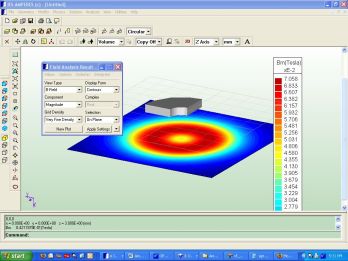
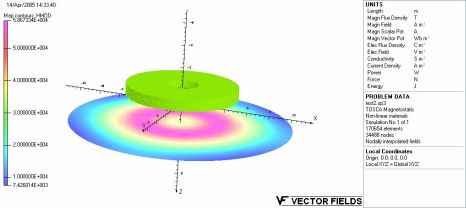
Interesting Paper: A Biomagnetic System for in vivo Cancer Imaging
Magtration Technology by PSS
K. Sawakami-Kobayashi et al., Biotechniques 34, 634 (Mar, 2003). Magnetic Stem Cell Selection
Magnetic Stem Cell Selection
Don't Swallow your Magnets!
Tiny Magnetic Nanocrystals in Large Quantities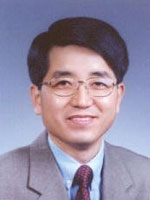 Taeghwan Hyeon and co-workers just published a very useful paper about how to make magnetic nanoparticles in 40 g batches. The method is very simple and starts with the reaction of metal chlorides, such as FeCl3, with sodium oleate, which produces a metal oleate complex. This material is then heated slowly in a high-boiling-point solvent, such as 1-octadecene, the complexes decompose and form nanocrystals. Depending on the solvent used (the boiling point is what matters), they made nanocrystals of 5, 9, 12, 16 and 22 nm. In each batch, the particle size variation was less than 4%.
Taeghwan Hyeon and co-workers just published a very useful paper about how to make magnetic nanoparticles in 40 g batches. The method is very simple and starts with the reaction of metal chlorides, such as FeCl3, with sodium oleate, which produces a metal oleate complex. This material is then heated slowly in a high-boiling-point solvent, such as 1-octadecene, the complexes decompose and form nanocrystals. Depending on the solvent used (the boiling point is what matters), they made nanocrystals of 5, 9, 12, 16 and 22 nm. In each batch, the particle size variation was less than 4%.
First single-crystal magnetite nanotubes grown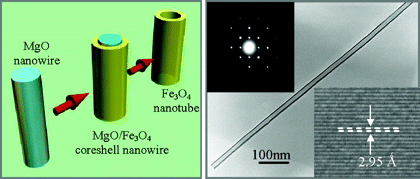
Tiny Iron Supplement Has Chilling Effect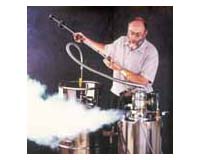
Please Support this Journal by Publishing your Papers There !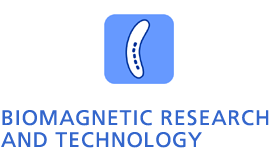 A very relevant journal to the scientific and clinical application of magnetic carriers is called Biomagnetic Research and Technology. The journal is published by BioMed Central, with Professors Ivo Safarikand Mirka Safarikova as chief editors. This online journal welcomes papers in biological, medical, environmental and related systems and processes involving magnetic nano- and microparticles and structures, and paramagnetic molecules; the effects of magnetic fields on biosystems; the construction of magnetic biocompatible and biomimetic systems, especially those based on magnetic nano- and microstructures; application of basic biomagnetic research in biosciences, biotechnology, environmental technology and related areas. Published papers are available online free of charge and they are indexed in the PubMed database. More information is available from safarik@uek.cas.cz or mirkasaf@uek.cas.cz, or from the journal's home page at
A very relevant journal to the scientific and clinical application of magnetic carriers is called Biomagnetic Research and Technology. The journal is published by BioMed Central, with Professors Ivo Safarikand Mirka Safarikova as chief editors. This online journal welcomes papers in biological, medical, environmental and related systems and processes involving magnetic nano- and microparticles and structures, and paramagnetic molecules; the effects of magnetic fields on biosystems; the construction of magnetic biocompatible and biomimetic systems, especially those based on magnetic nano- and microstructures; application of basic biomagnetic research in biosciences, biotechnology, environmental technology and related areas. Published papers are available online free of charge and they are indexed in the PubMed database. More information is available from safarik@uek.cas.cz or mirkasaf@uek.cas.cz, or from the journal's home page at
For more information, check out our Archives.
September 2017
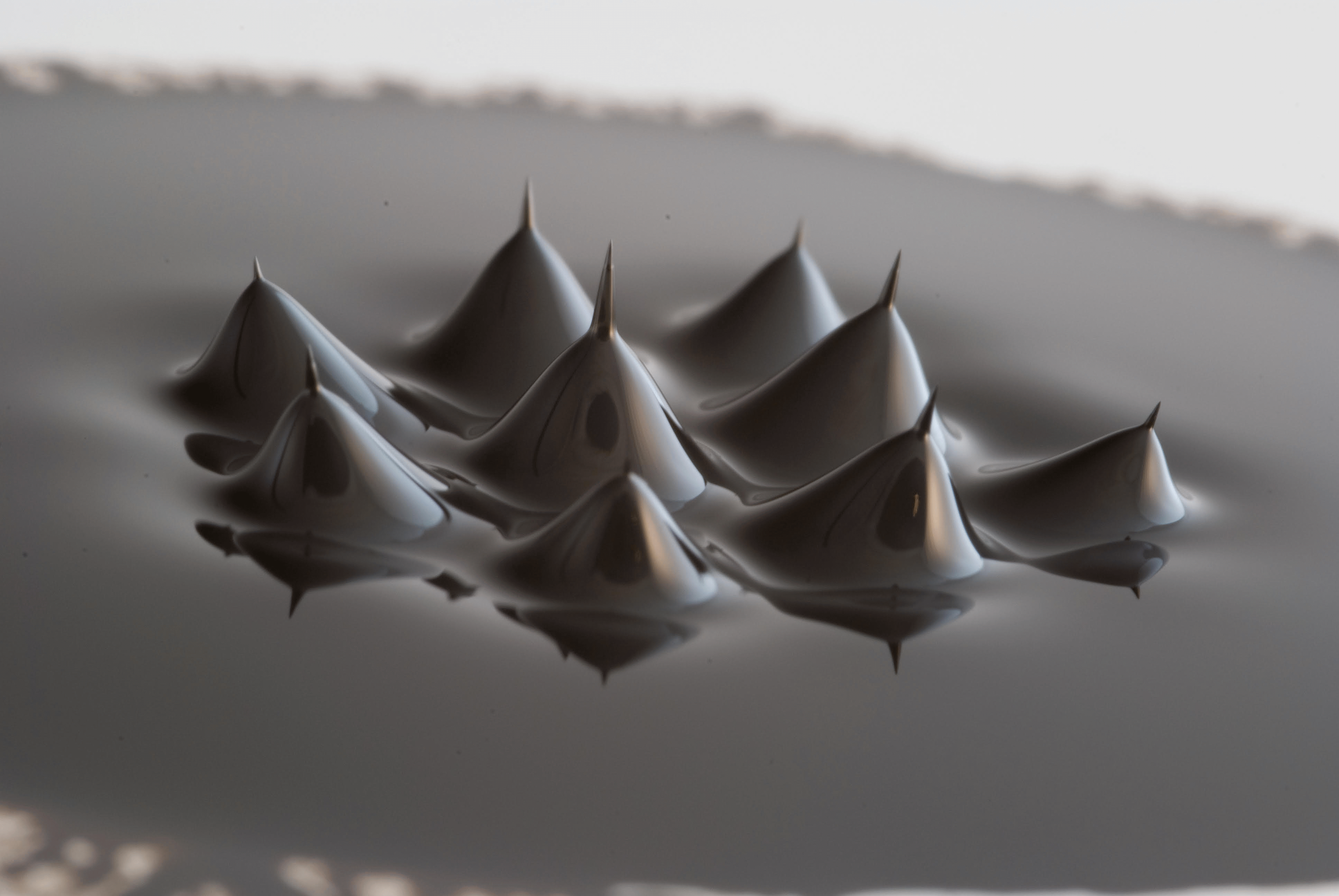
Search this site with the power of
